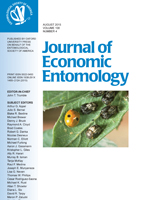BioOne.org will be down briefly for maintenance on 14 May 2025 between 18:00-22:00 Pacific Time US. We apologize for any inconvenience.
FORUM (1)
ECOLOGY AND BEHAVIOR (10)
PLANT RESISTANCE (2)
STORED-PRODUCT (2)

No abstract available

